One trend stood out clearly at this year’s US National Bonsai Exhibition: the prevalence of North American natives.
Despite their growing popularity over the past ten to fifteen years, natives have made up a relatively small portion of the trees at the National Exhibition. This is likely because it takes time to train bonsai to an adequate level before they can be presented at high-level exhibitions.
This year there was a good variety of natives on display, so I wanted to focus on some of the highlights. Let’s start with one of my favorites, a Rocky Mountain juniper by Amy Blanton.
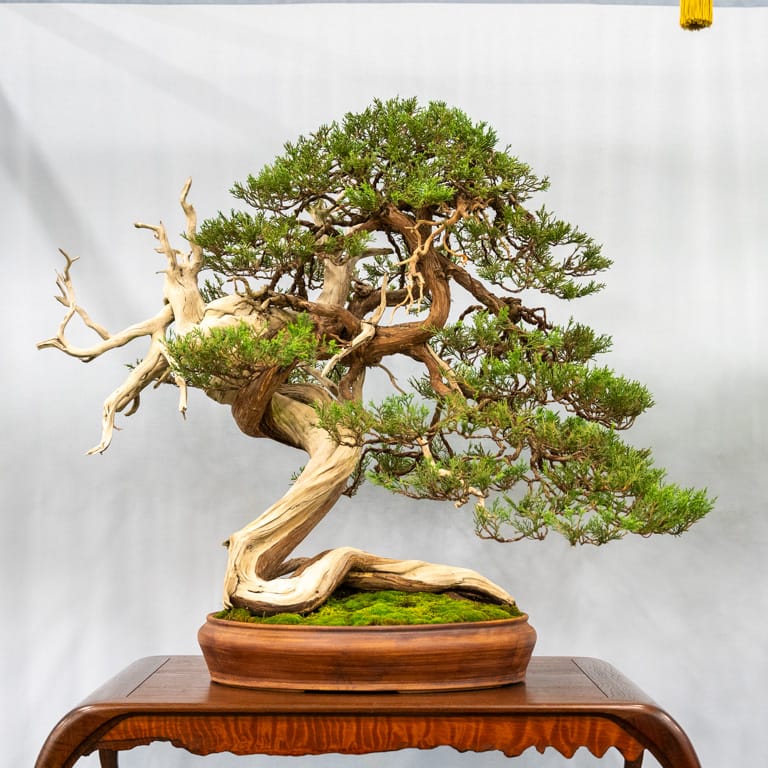
Rocky Mountain juniper
Some of you might recognize this tree from the 2015 Artisans Cup where it was awarded third place. If you’re curious what it looked like eight years ago, here’s a photo from the Cup.
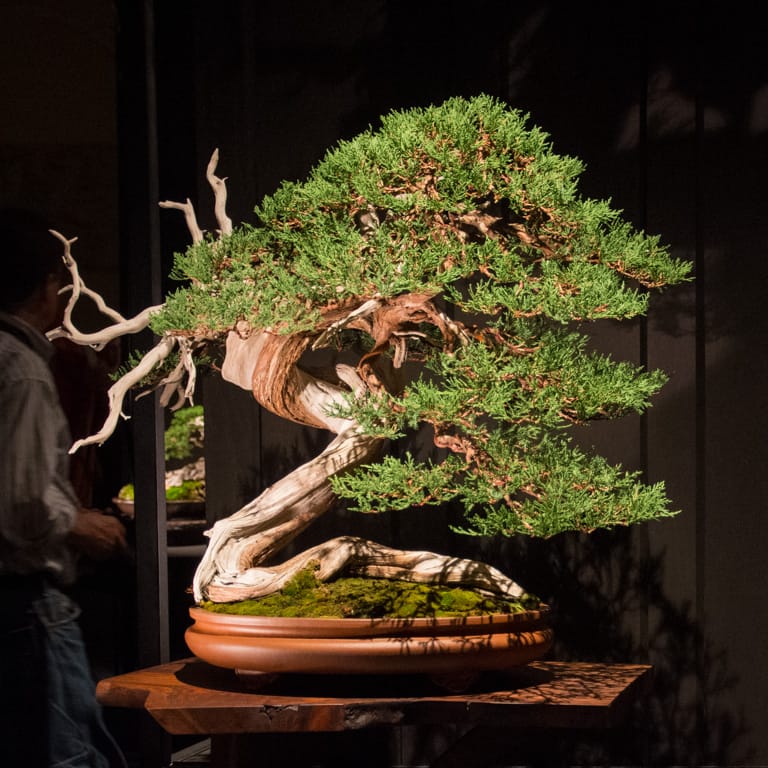
Rocky Mountain juniper
Here’s another Rocky Mountain juniper from Dan Turner. This tree won the Bonsai West award for for Finest Evergreen Bonsai.
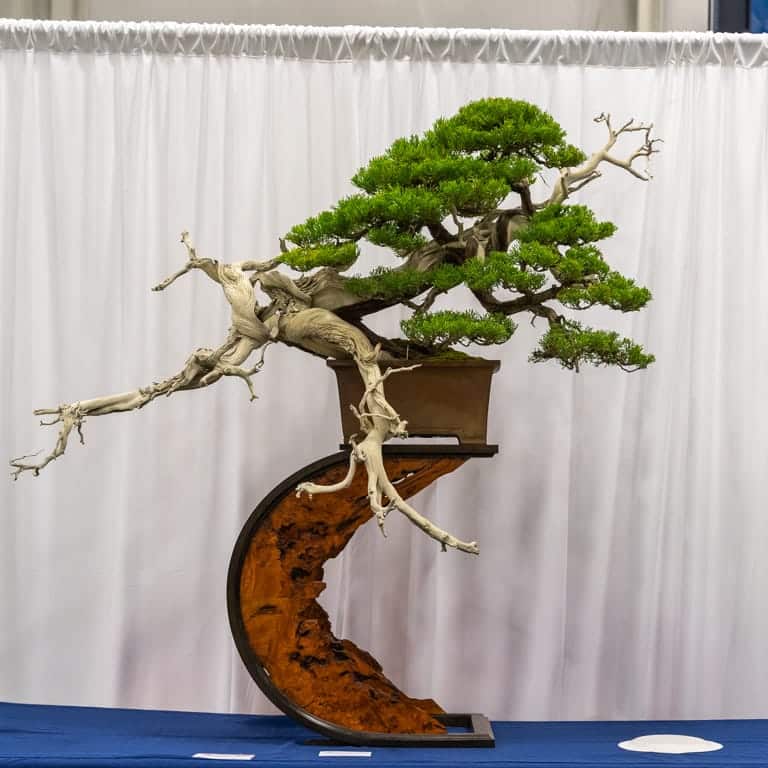
Rocky Mountain juniper
One native species I’d enjoying seeing more of is Douglas fir. The soft foliage and craggy bark always reminds me of trips to the mountains.
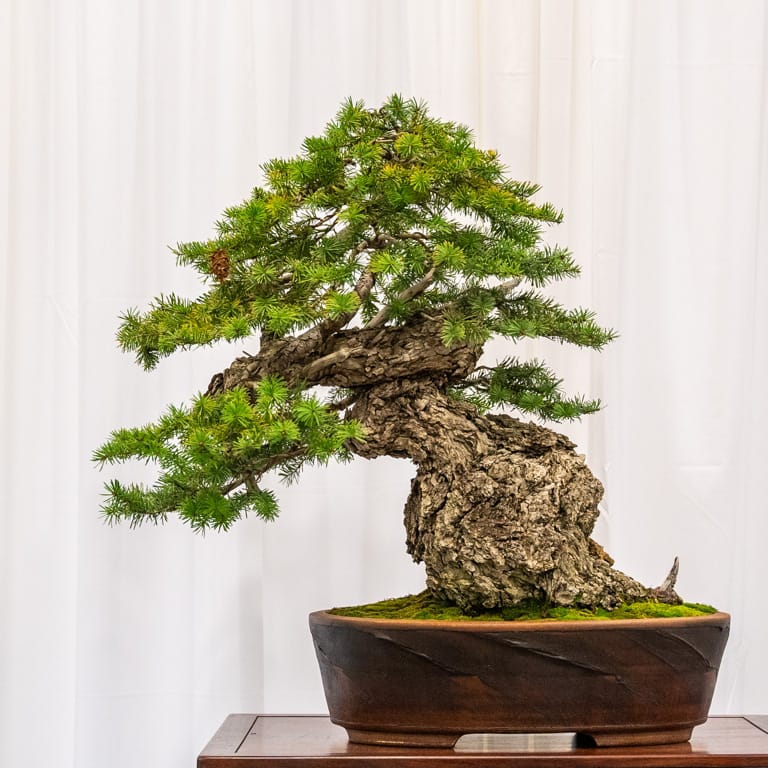
Douglas fir by Dan Turner
I also look forward to seeing more Eastern white cedars. The foliage supports diverse approaches to pad construction which suggests we’ll see specimens that convey very different interpretations of the species. Here are two approaches.
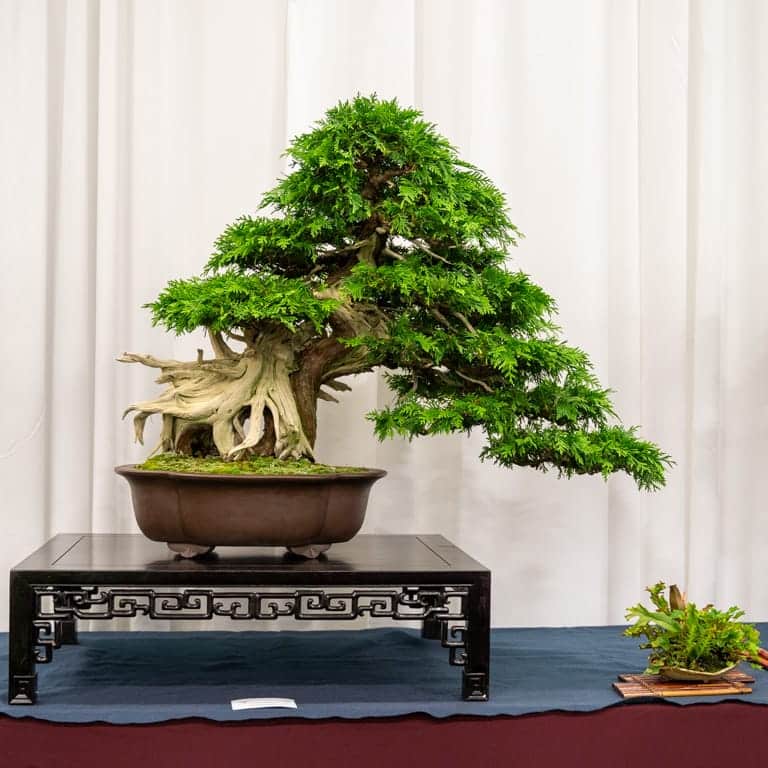
Eastern white cedar by Suthin Sukosolvisit
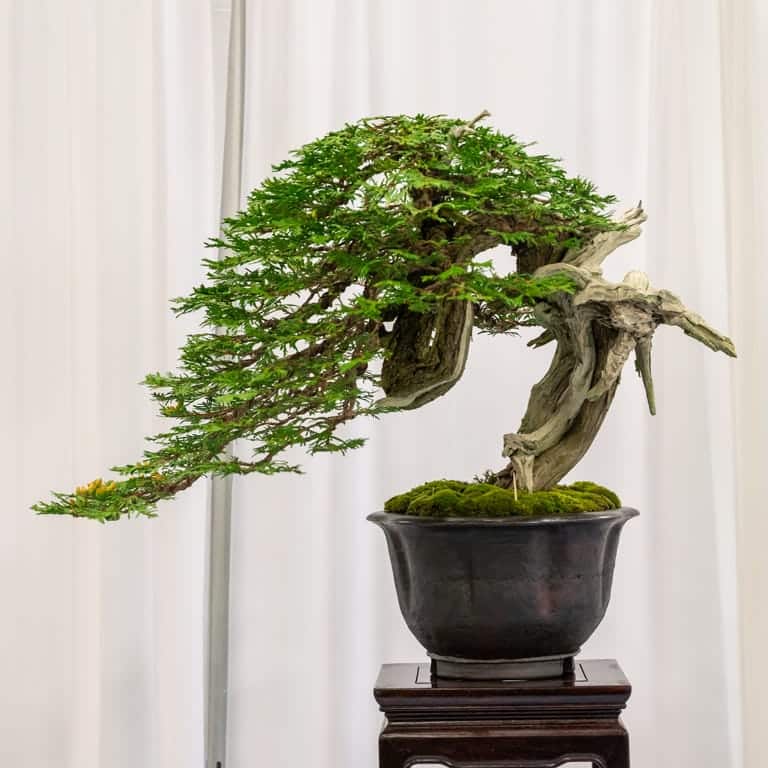
Eastern white cedar by Mike Roussel – Winner, Kennet Bonsai Award for finest bonsai from Canada
Ponderosa pines have long been a fixture among native North American species due to their sinuous trunk lines and aged deadwood. Here’s a specimen from John Ruth.
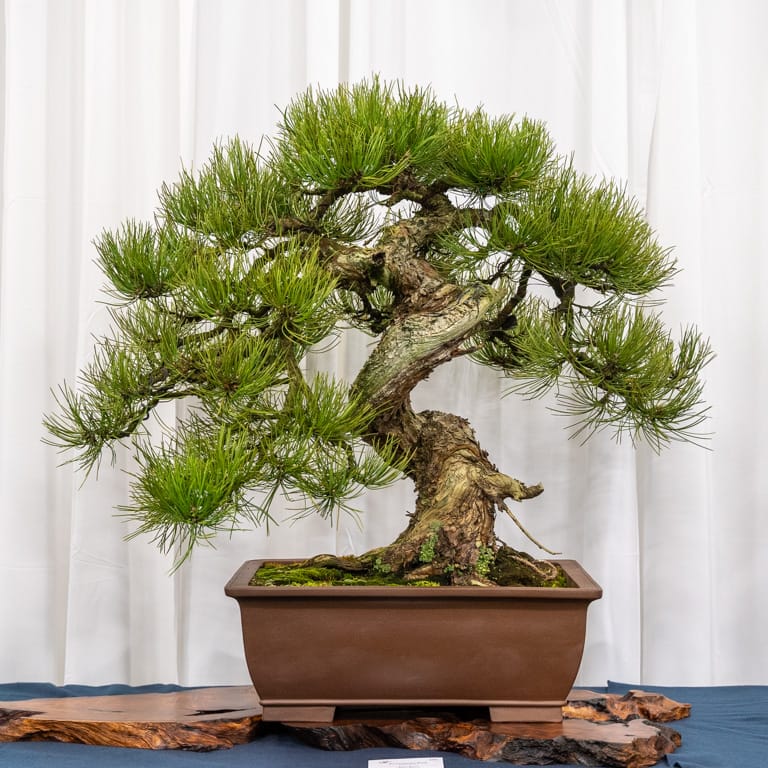
Ponderosa pine
Among native deciduous conifers, larch have great history as bonsai, particularly in the Northeast. Here’s a specimen presented in the cascade style.
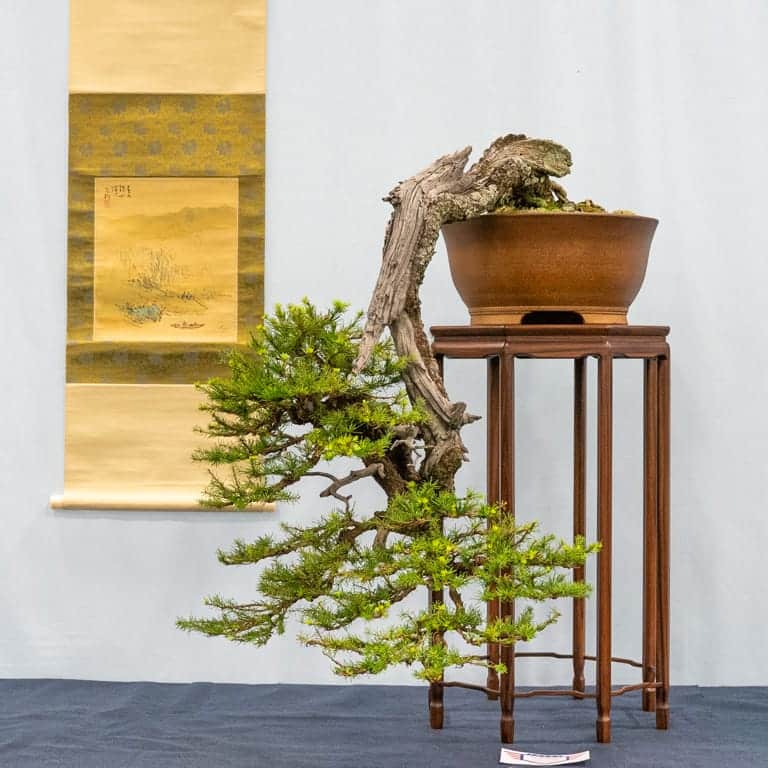
American larch by Brian Kelley
The last species we’ll look at today is Colorado blue spruce. The species has become popular for its short, straight needles and aged bark and deadwood.
The specimen below, by Karen Harkaway, won the ABS North American Bonsai Award for finest North American species bonsai.
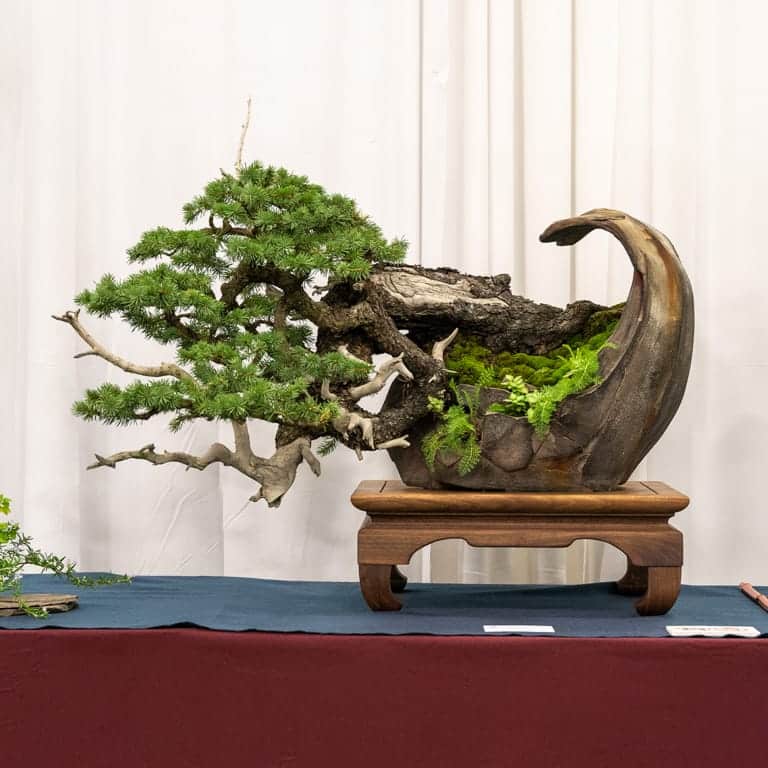
Colorado blue spruce – container by Erik Križovenský
Another Colorado Blue spruce, also in a container by Erik Križovenský, suggests a much larger tree growing in an open landscape.
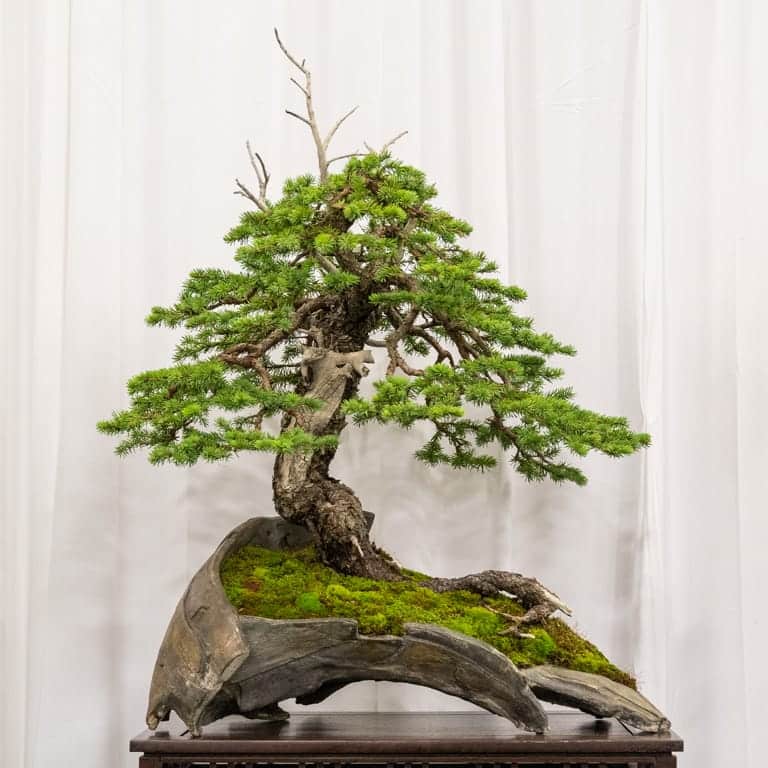
Colorado blue spruce by Thomas Ungrey
I hope you enjoyed this brief tour of the US National Exhibition! If you’re interested in seeing all of the trees on display at the exhibition, you can pre-order the exhibit catalog from International Bonsai.
Have any favorites among the entries above? Feel free to share in the comments below.
Subscribe to Bonsai Tonight
New Posts Delivered Every Tuesday and Friday
Ben Creehan says
Great posts! I get excited every Friday to see what your blog will contain. This week didn’t disappoint. Fabulous photos and I enjoyed the information as well.
Steve Hamari says
I like the new container for the first rmj. I think I preferred the previous styling. My favorite feature was covered by the lowest, left, branch. I don’t see the point in revealing the upper trunk. It’s still my favorite tree of the group.
Bonsai Pit says
To me the Douglas Fir conflicts with itself. The thick flaky bark suggests a tree of great age (perhaps even ancient) but the entire foliage mass and apex suggest a youthful young tree.?